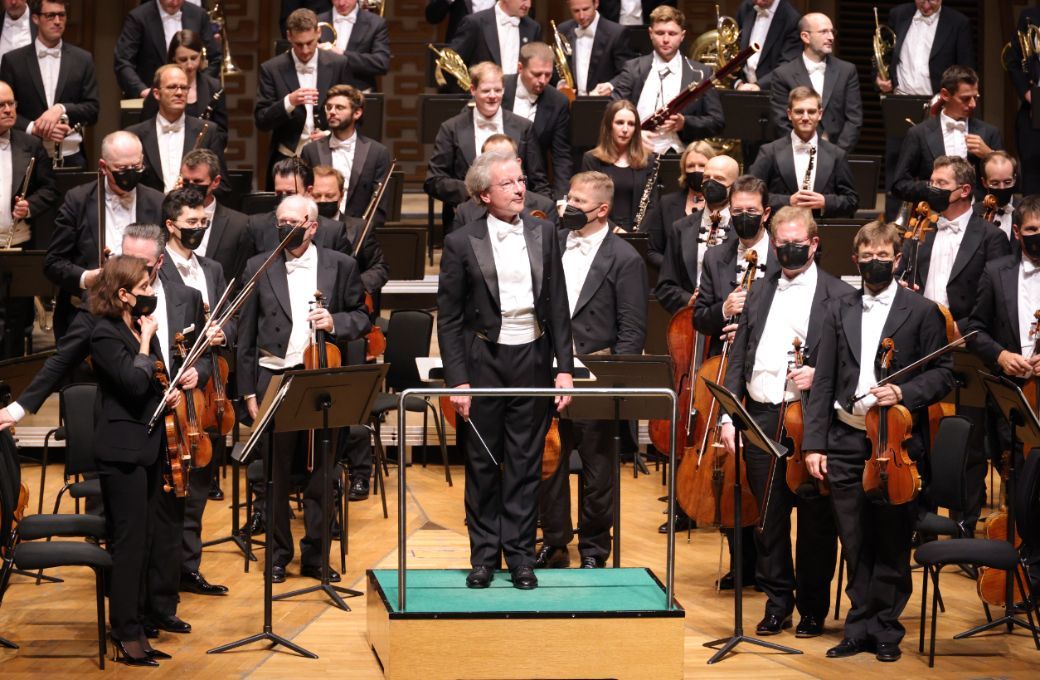It was the Wiener Klangstil or “Viennese sound style” that lured concertgoers to Hong Kong’s Cultural Centre en masse on Monday evening to hear the Vienna Philharmonic kick off their Asian tour with Franz Welser-Möst at the helm. Given the works were selected from their core German and Czech repertory, it was little wonder that tickets were snapped up like proverbial hotcakes.
Listeners would have to hang off for that dose of Viennese charm until after the interval though, for sentiments of joy were clearly off the table to begin with in Wagner’s Prelude to Parsifal and Strauss’ Death and Transfiguration. In Welser-Möst’s hands though, it proved a glorious showcase of the orchestra’s unique sound palette.
Elegance and warmth in the string sound allured early on in Parsifal’s prelude, and vulnerability in the unaccompanied violins and cellos set a scene of perfect ambiguity. Woodwind and brass added wonderful layers of texture as they emerged from the cultivated, pulsating undercurrent of viola arpeggios. Welser-Möst’s gentle sway and gesture sufficed as direction, and it was then glorious to behold magnificent cathedrals of sound from the brass and wind chorales, appearing like a rows of solid pillars, each as secure as the next. The Grail motif was ethereal as it passed throughout the orchestra, until the subtle swells of restless string tremolo set in and one clearly sensed that something was up in the domain.
Probably for reasons of tonality, and presumably to maintain the audience’s rapt attention by avoiding applause, Welser-Möst segued straight into Death and Transfiguration. Finely-nuanced solos emerged from the string syncopations and the irregular timpani heartbeats of Strauss’ sick, dreaming artist. The uniqueness of the Viennese oboe captivated immediately as it hovered above dreamlike harp arpeggios. Concertmaster Albena Danailova’s sweetly-toned, ever-focused violin playing impressed, and when the orchestra’s agitation was unleashed in the ensuing death struggle, the sound – to use a wine analogy – was vibrant, full-bodied and well-balanced throughout Strauss’ brilliantly-textured surges. The Vienna Philharmonic was right at home. And as the glorious brass chorales subsided over angelic strains in the upper strings, a sense of fulfilment in death moved profoundly.

Then like a comforting hug, the cello’s warm introduction to Dvořák’s Symphony no. 8 in G major was most welcome after the interval. Sunny buoyancy was the order of the day in the opening Allegro, and the seamless passing of string pizzicato from section to section especially impressed. Highly effective pianissimo echoes of woodwind phrases in the Adagio made amends for both the horn and oboe blemishes in the movement’s development. The fabulous lilt that marked the Allegretto grazioso was delightful, and the swaying of silky string sound oozed Bohemian charm. The solo trumpet heralded the finale with majestic precision and a great final romp ensued. Stomping rhythms rocked and the spectacular fluttering of horns towards the explosive conclusion ended the Philharmonic’s first concert in triumphant fashion.


